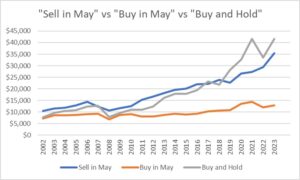Funny… You Should Ask
I gave up on Saturday Night Live after the original cast (including Dan Ackroyd, John Belushi, Chevy Chase, Jane Curtin, and Gilda Radnor) and the original writers were replaced by less talented performers and more politically correct writers. Over the years, SNL degraded from a quirky and sometimes brilliant comedic experiment that tested the boundaries of acceptable social satire to a weekly production of predictable softball spoofs of liberals and meanspirited mockery of conservatives.
Fundamental Rule of Comedy: Humor that mocks and condescends is not funny. It is insulting to those it targets, and energizes antipathy toward those it seeks to represent.
Great humor operates on a deeper level by highlighting human frailties, failings, and absurdities that are universal – follies that, being so common, tend to amuse and delight the full spectrum of audiences that are exposed to it. By identifying human folly in a loving way, it elevates and unites – rather than debases and divides – all those who partake of it.
While SNL was losing market share over the years by playing it safe and correct, a new form of social satire was developing by taking on the challenges that SNL had retreated from and by pushing the comedy envelope farther towards the edge of convention and respectability. It was every bit as bold and uncensored as the original productions of SNL, but, looking back at televised episodes now, I can see that in many cases it actually went further and cut more deeply.
Despite numerous recommendations from friends that I should investigate it, I didn’t because of the medium: cartoons. I dismissed the format as frivolous.
The one exception was Beavis and Butt-Head, which could be considered unifying only in the sense that its target is a stage of life that most of us experience for some portion of our adolescent and teenage years. It was silly and juvenile, and I thought it was hilarious.
That is why, when I came upon this video clip of a Beavis and Butt-Head bit on a recent episode of Saturday Night Live, I was curious enough to click on it.
While it was not in any way pushing any boundaries, it did make me laugh, and that gave me hope. It made me wonder if Lorne Michaels, after struggling for decades against SNL’s diminishing market share, may be redirecting the once-lauded series back to being as good as it once was.
It also made me wonder if Beavis and Butt-Head was as good as I remembered it.
I found this video online – “The 10 Funniest Beavis and Butt-Head Moments” – and took a look.
Unhappily, though I still thought it was funny, it wasn’t belly-laugh funny as it once was for me.
So I took a gander at some of the cartoons that I’d been ignoring for so many years – The Simpsons, South Park, and Family Guy – and, as my friends had claimed, they were very good. Funny without, I think, being divisive. But could that be because they tend to satirize the kind of ideas that I find in need of satirizing at this point in my life?






